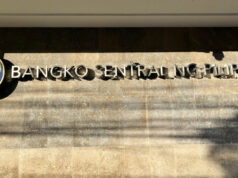Next sugar crop expected to match 2016-2017 high
RECORD sugarcane production in the last crop year is weighing on prices, and the Sugar Regulatory Administration (SRA) sees similar output levels in the upcoming season if weather conditions continue to be favorable.
The 2.5 million metric ton (MT) yield in crop year 2016 to 2017, was the highest recorded in the industry since the agency was established in the 1980s, according to SRA Administrator Hermenegildo R. Serafica.
“This week against last week we are P30 down for domestic sugar. It’s very erratic,” Mr. Serafica said in an interview with BusinessWorld last week, noting that the behavior of prices is due to “so much inventory” of sugar at the mills.
The SRA’s weekly preliminary data on the sugar supply and demand situation shows that raw sugar held by the mills totaled 497,770 MT as of Oct. 15, about 52.29% higher than a year earlier.
This has forced two mills to swap their ‘B’ or domestic sugar to ‘D’ or world sugar in order to export a portion of their stocks and decongest their millsites.
“That’s a very big sacrifice. And they will lose money just to declog their warehouses because… they will lose more money if they will stop and operate again,” Mr. Serafica added.
“If the weather will cooperate… we might get close to [last year’s production]. Our priority is to bring down cost as much as possible without sacrificing the yield. That can really help farmers invest more,” he said.
Based on his remarks the SRA could end up having to revise upward its estimates for sugarcane performance in the crop year 2017-2018 which were initially estimated at 2.38 million MT. But two months into the sugar crop year, which runs August to September, Mr. Serafica said it’s too early to make adjustments.
He also noted that the days of alarming import levels of high fructose corn syrup (HFCS) — a cheap industrial sweetener sourced from China blamed for depressing sugar prices, especially last crop year — are over after the issuance in February of Sugar Order No. 3
The policy capped the volume of HFCS shipments while ensuring that beverage processors use more sugar in their operations before they can access shipments of HFCS.
HFCS is “not affecting us,” Mr. Serafica assured. “Compared to the past two crop years, shipments have gone down tremendously.”
Some 80% of sugar output is allocated to the domestic market while shipments to the US and world markets each have a 10% allocation.
The Philippines consumes nearly 200,000 MT of sugar monthly, leading to annual demand of about 2.2 million MT to 2.44 million MT. — Janina C. Lim



